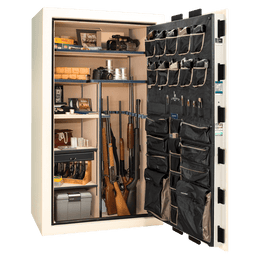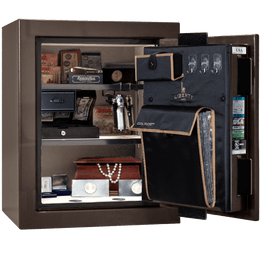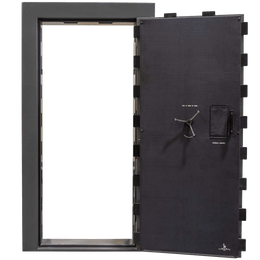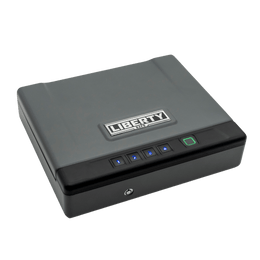In today’s world, more Americans than ever are considering their right to self-defense—not just in principle, but in practice. With concerns over crime, civil unrest, and general uncertainty, it’s no surprise that home defense is the #1 reason Americans purchase a firearm. For first-time gun owners, especially, this decision can raise a flood of questions: What kind of gun is best? What ammo should I use? How can I prepare responsibly?
This guide offers a comprehensive overview of home defense firearms, providing practical advice on selecting the right weapon, choosing the appropriate ammunition, navigating legal considerations, training, and making informed upgrades. While it doesn’t cover concealed carry or emergency survival scenarios, it’s tailored to help you respond effectively to that "bump in the night."
Choosing the Right Firearm for Home Defense
When selecting a home defense firearm, your choice will be between shotguns, handguns, and rifles. Each has distinct advantages and trade-offs, and understanding them is the first step in making an informed decision.
Shotguns
Shotguns remain one of the most popular choices for home defense—and for good reason. At close range, a shotgun is an extremely effective tool for stopping a threat. Whether you’re using buckshot or birdshot, you benefit from a spread pattern that increases the likelihood of hitting your target, which can be especially useful under stress.
Another important consideration that shotguns help address is overpenetration—the risk that a round might pass through walls and endanger others in your home or neighborhood. A lighter shot can reduce this risk compared to bullets fired from a handgun or rifle. There is much debate over the effectiveness of these loads, but ultimately, they can still prove a devastating blow to an assailant at close range.
Video: Home Defense: Over Penetration Through Walls
That said, shotguns come with limitations. Detachable magazines can be unreliable, leaving you with a traditional, slow-to-reload tube magazine that holds between 4 and 8 rounds. Additionally, recoil—especially with 12-gauge loads—can be substantial, making rapid follow-up shots more challenging, particularly for smaller or less experienced shooters. Though they easier to accurately shoot due to their use of a stock, this can make maneuvering in close quarters more difficult, though proper training and the use of shorter barrel options can offset this.
Handguns
Handguns offer the best maneuverability in confined spaces, making them ideal for navigating narrow hallways, corners, and doorways in your home. Their compact size also makes them easier and more affordable to store securely, such as in a bedside locker.
While modern handgun calibers like 9mm or .45 ACP are all capable of stopping a threat, handguns are generally less powerful than shotguns or rifles. Firing a handgun accurately and precisely also becomes more challenging, particularly under stress, due to the lack of a stock and shorter sight radius. Still, with proper training and defensive ammunition, handguns remain a practical and effective choice for many home defense scenarios.
Rifles
Rifles—especially lightweight carbines like the AR-15—offer a solution to the drawbacks mentioned with shotguns and handguns through their unique blend of accuracy, capacity, and modularity. Similarly to a shotgun, the stocks on rifles allow for better control of the weapon and thus greater accuracy, but make it difficult to maneuver in close situations. Most modern rifles can also be easily customized with lights, optics, and other accessories that enhance their utility in a home defense role, not to mentioned better configured to the individual shooter. Finally, rifles offer the largest capacity of the three options, with 30-round mags standard.
However, the main drawback of rifles in this context is overpenetration. Rifle rounds such as .223/5.56 NATO are more likely to travel through drywall and retain lethal energy on the other side, increasing the risk to other occupants or neighbors.
Ammunition Selection: Hit Hard, Stay Safe
Regardless of the platform you choose, using the right ammunition is crucial for both effectiveness and safety. While full-metal-jacket (FMJ) rounds may be inexpensive and ideal for training, they are generally not recommended for home defense due to their tendency to overpenetrate barriers as well as fail to deform upon impacting flesh.
Instead, consider using:
- Hollow point or other specially-marked defense rounds for handguns
- Buckshot or lower numbered birdshot for shotguns
- Fragmenting or soft-point ammunition for rifles
These options are designed to expand or break apart upon impact, maximizing stopping power while reducing the risk of a round passing through walls or unintended targets.
Spending a little extra on defensive ammunition is a small price for the performance and peace of mind it provides. Use the cheap stuff for practice—but load your home defense firearm with purpose-built rounds.
Know the Law Before You Need to Act
Before ever needing to use a firearm in self-defense, it’s your responsibility to understand the legal framework in your state and locality. Stand Your Ground, Castle Doctrine, and duty to retreat laws are just a few staples in home defense law that vary widely and can determine whether your actions are deemed justified or criminal.
Don’t rely on rumors or internet forums. Consult your local law enforcement, state statutes, or even a qualified attorney. A good rule of thumb: protect yourself legally before you protect yourself physically. Also, be aware of how your choice of firearm and its appearance might be perceived in a courtroom. A customized AR-15 with aggressive markings or slogans could influence a jury’s impression of your intent. While it's your right to own and personalize your weapon, think carefully about what story it tells if it ever ends up as evidence.
Training: The Most Important Investment You Can Make
Owning a firearm is not the same as being prepared to use it. In a real home defense situation, you may be tired, disoriented, and adrenaline-fueled—hardly ideal conditions for precise decision-making. That’s why training is non-negotiable. You should be intimately familiar with your firearm, including how to:
- Clear malfunctions
- Reload under stress
- Maintain proper trigger discipline
- Fire accurately under pressure
At a minimum, practice regular dry fire drills, invest in some live-fire range time, and consider enrolling in a reputable home defense or concealed carry course. These classes often include scenario-based training, decision-making exercises, and legal education, giving you a far more realistic understanding of what self-defense entails. Muscle memory, confidence, and critical thinking all increase with training. Don’t stop learning once you buy the gun; owning it is just the beginning.
Smart Upgrades for Home Defense Firearms
Once you’ve selected a weapon and trained with it, you may want to make a few upgrades to maximize its effectiveness for home defense. The most useful enhancements include illumination and sighting systems oriented toward low-light situations.
Weapon-Mounted Flashlights
A quality weapon-mounted light is essential for identifying potential threats. Not only does it help you see what’s in front of you, but it can also disorient an intruder, giving you a tactical advantage. In high-stress, low-light situations, target identification is critical; you can’t shoot what you can’t positively identify.
Optics and Night Sights
While iron sights work in daylight, they can be hard to use in the dark. Consider adding a red dot optic, which enables rapid target acquisition in low-light conditions. Just keep in mind that red dots require batteries, so check and replace them regularly to avoid failure at the worst possible moment. If battery-powered optics don’t appeal to you, tritium night sights are a great alternative. These glow-in-the-dark sights are always “on” and require no maintenance, making them ideal for quick engagement in dark rooms or hallways. There are countless other accessories and upgrades—suppressors, slings, foregrips- but for home defense, a light and reliable sighting system offers the best return on investment.
Final Thoughts: A Foundation for Responsible Defense
Choosing to arm yourself for home defense is not just a constitutional right—it’s a serious responsibility. Whether you’re a first-time gun owner or a seasoned shooter revisiting the basics, the key is thoughtful preparation. That means selecting the right firearm and ammunition, staying informed about the law, committing to ongoing training, and ensuring your gear is properly maintained and ready. Your goal isn’t to become a basement operator; it’s to keep yourself and your loved ones safe. Hopefully, this guide has provided you with a practical foundation to build upon. From here, you can explore more in-depth training, consider advanced tactics, or refine your loadout to suit your unique situation. When the time comes to defend what matters most, the work you put in today could make all the difference.
*Made in the U.S.A. from U.S. and Global Parts.







